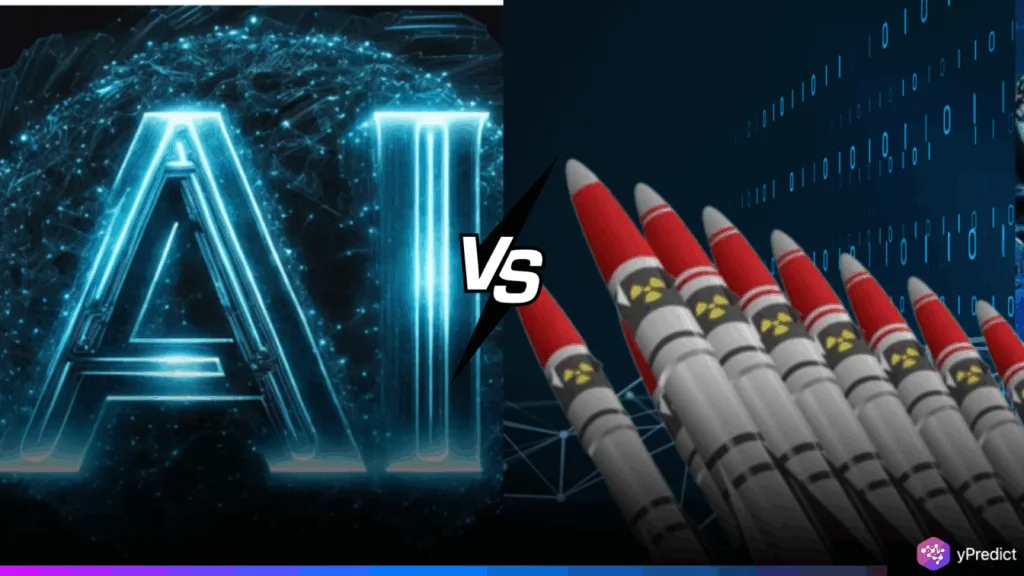
Chinese researchers have developed an AI system capable of identifying real nuclear warheads from decoys, marking the world’s first AI-powered arms control verification tool. Created at the China Institute of Atomic Energy (CIAE), the technology aims to strengthen China’s role in global disarmament talks. It analyzes radiation signatures, allowing accurate verification without accessing sensitive weapon designs. This innovation addresses long-standing concerns about sharing classified data in inspections. While the AI has passed the first hurdle, secure training with simulated data, other challenges remain. These include building trust with military officials and convincing nations like the U.S. to adopt modern, AI-driven verification methods.
How the AI System Works
The system, officially titled the “Verification Technical Scheme for Deep Learning Algorithm Based on Interactive Zero Knowledge Protocol,” combines cryptography with nuclear physics. Researchers trained it using Monte Carlo simulations, generating millions of virtual nuclear components, some with real fissile material and others as decoys. This allowed the AI to distinguish subtle differences in neutron flux patterns. A critical feature is the use of a 400-hole polythene wall that prevents direct observation of the warhead’s geometry while allowing radiation signatures to pass. This safeguards classified design details while providing the necessary data for verification.
The AI focuses solely on determining whether the inspected object can trigger a chain reaction, not on how it is built. This approach bypasses traditional “information barriers” used by the U.S., UK, and Russia, which are often criticized for being complex and unreliable. CIAE claims the AI tools demonstrated very high accuracy and significantly reduced misclassification of ultralow HER2-level warheads. The researchers suggest mutual training, validation, and sealing of the AI software by both inspectors and host nations to build international trust. If adopted, this could be a turning point in arms control transparency and security.
Strategic Implications for Global Arms Control
This breakthrough arrives at a time when U.S.-China nuclear arms talks remain stalled. China has traditionally resisted international verification systems, citing concerns about espionage and unequal treatment due to its smaller arsenal, roughly 600 warheads compared to America’s 3,748. The new AI system could change that. It offers a way to verify nuclear assets without revealing sensitive information, which may help ease geopolitical tensions. CIAE believes that the AI tools could act as a neutral verifier, reducing mistrust between nuclear powers. The proposal for joint development and sealed AI software further strengthens the system’s integrity.
Unlike legacy approaches that depend heavily on physical inspections and human judgment, AI introduces automation, consistency, and security. The technology might also encourage broader participation in future treaties by nations that previously hesitated. With this tool, China is positioning itself as a leader in next-gen arms control tech. CIAE’s legacy, especially with Yu Min’s contributions to miniaturizing nuclear weapons, adds credibility to its advancements. This shift from hardware-based inspections to AI-driven verification reflects a broader trend in global defense, where algorithms may soon play as vital a role as military arsenals in securing peace.
What This Means for the Future
China’s AI system signals a new direction in arms control: more secure, less intrusive, and technologically advanced. If embraced globally, it could make verification safer and more transparent, preserving national security while fostering trust. The tool’s success highlights how artificial intelligence can enhance, not replace, international diplomacy. Political hurdles remain, but the scientific achievement is clear. CIAE’s innovation has the potential to modernize outdated Cold War-era systems and inspire new standards for nuclear transparency. As arms races evolve, verification may depend more on smart software than spy satellites. With this move, China is reshaping how the world verifies peace, not just how it prepares for war.






